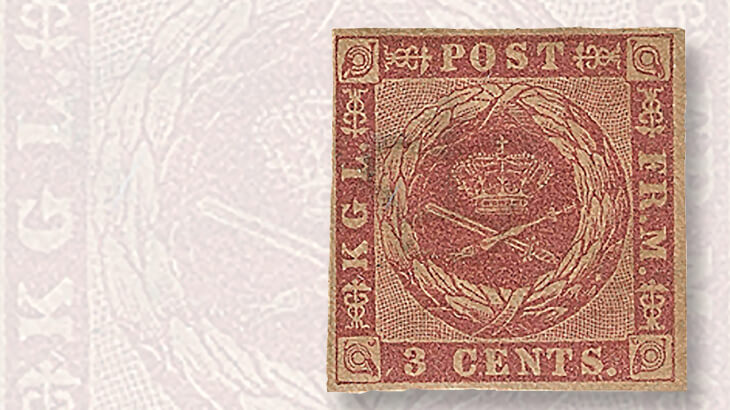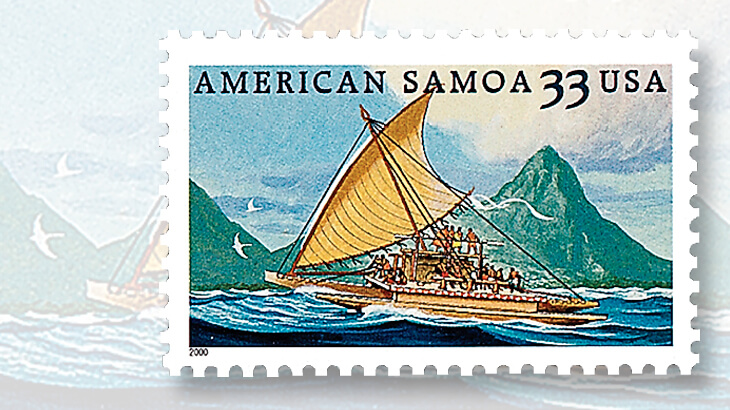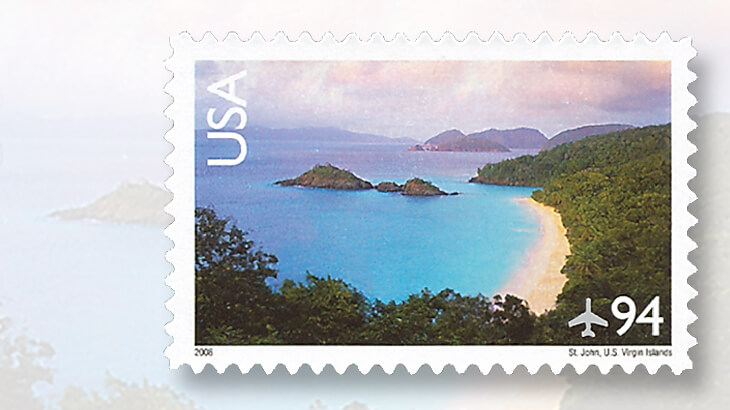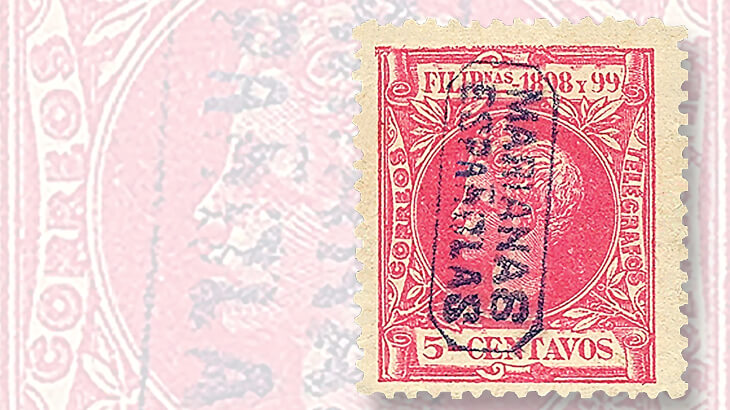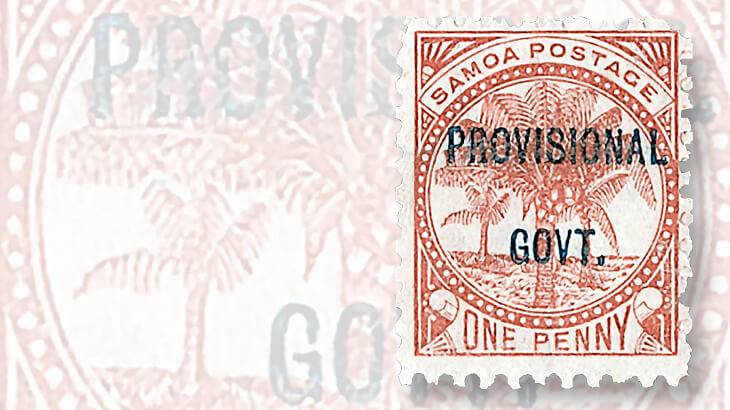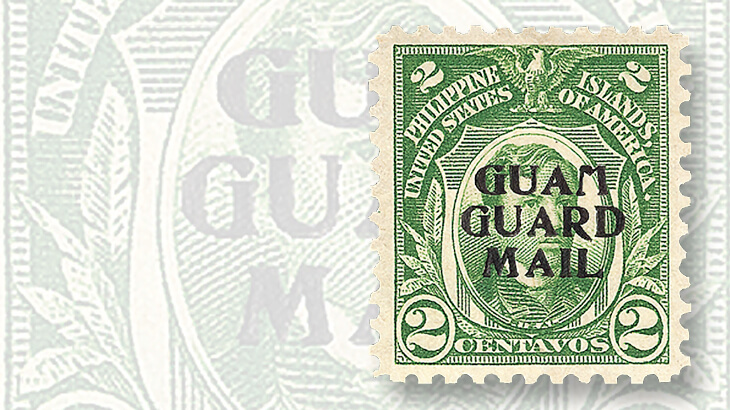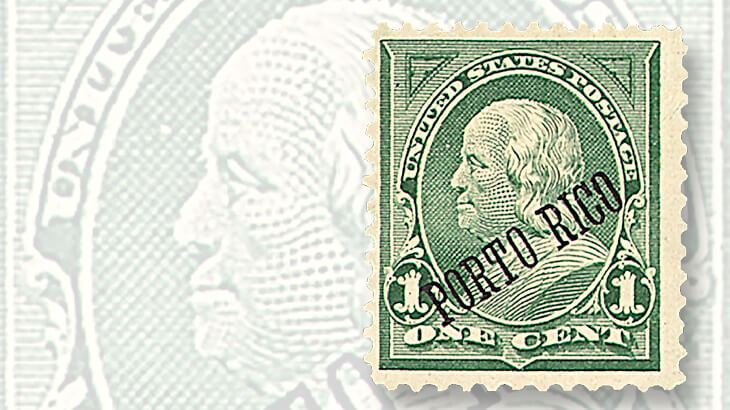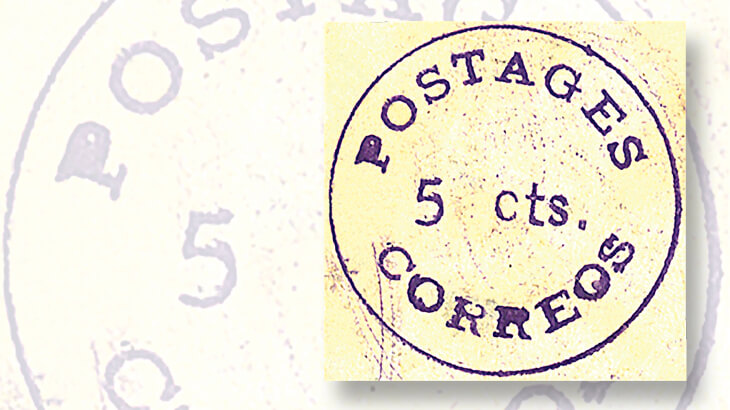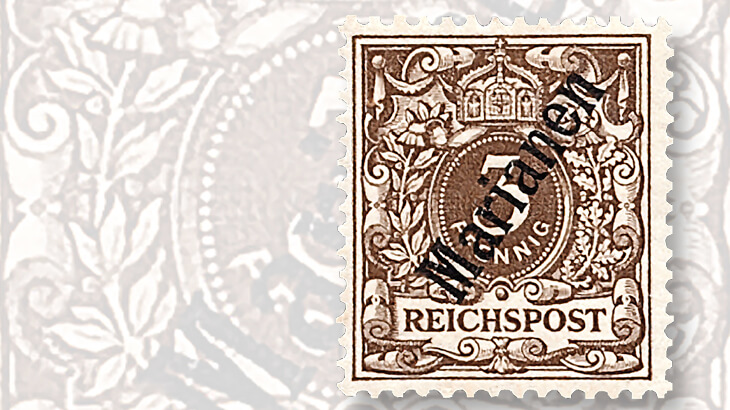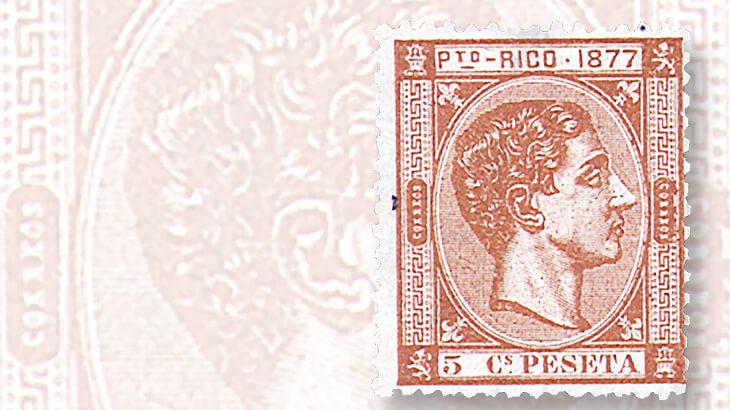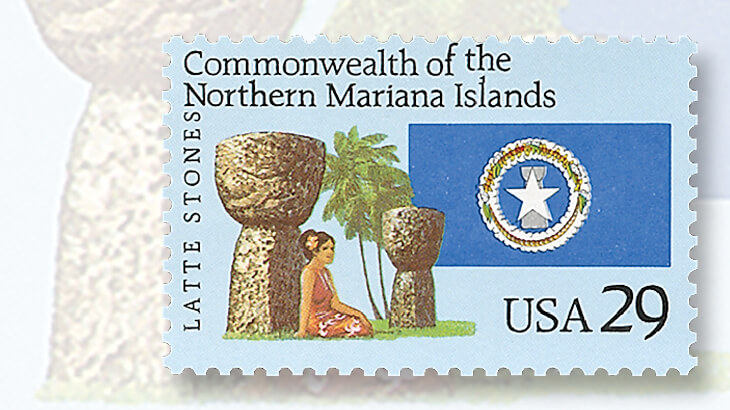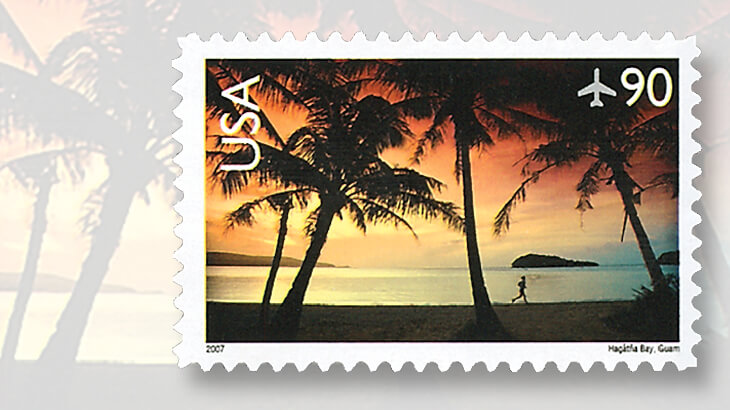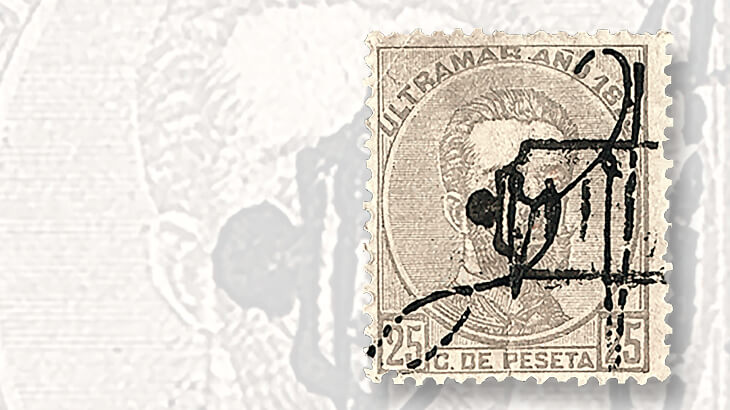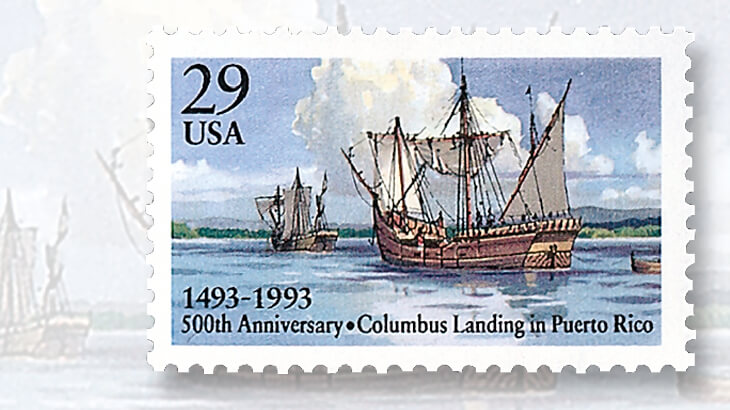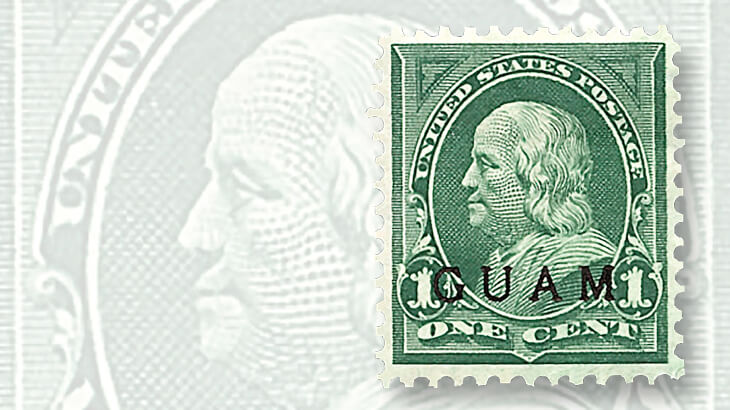POSTAL UPDATES
insights
United States territorial history and stamps make an interesting study: Stamp Collecting Basics
By Janet Klug
If you have ever watched “man on the street” interviews on television or elsewhere, you may have noticed that when the questions pertain to geography, the man (or woman) on the street is likely to be clueless.
Stamp collectors, in contrast, have an enormous advantage in geographical skills, and probably even know that, in addition to 50 states, the United States of America also has 16 holdings that are territories or commonwealths.
Only five of them are inhabited — can you name them? Do you know how they became U.S. holdings? And, more to the point, do you know if they issue their own postage stamps?
Connect with Linn’s Stamp News:
Sign up for our newsletter
Like us on Facebook
Follow us on Twitter
Let’s let history and philately help to answer these questions.
The five current inhabited U.S. land holdings are Puerto Rico, Guam, American Samoa, U.S. Virgin Islands, and Northern Mariana Islands.
Puerto Rico and the Northern Mariana Islands originally were simply territories but now are commonwealths, which is a legal and political status above a territory but below a state. American Samoa, Guam and the U.S. Virgin Islands are territories.
Puerto Rico in the Caribbean and Guam in the Pacific Ocean are halfway around the world from each other, but both islands share a piece of history.
Puerto Rico and Guam both became U.S. territories in 1898. At that time, following the Spanish-American War, Spain ceded Guam and Puerto Rico to the United States by a treaty signed in Paris on Dec. 10, 1898.
Puerto Rico had been under Spanish control beginning in 1508, when explorer Ponce de Leon appropriated the island for Spain.
Stamps of Cuba, Spain and Great Britain were used in Puerto Rico between 1855 and 1873, and then what is considered Puerto Rico’s first stamp, Scott 1, was issued: It is shown here, an issue of Cuba overprinted for use in Puerto Rico.
Four years later, Spain’s King Alfonso XII appeared on stamps specifically made for Puerto Rico; Scott 13 of 1877 is pictured here. Spanish-dominion stamps for Puerto Rico continued until 1898, when the island became a U.S. territory thanks to the previously mentioned treaty of 1898. A provisional handstamp was used on envelopes in 1898. This stamp, Puerto Rico Scott 200, is known only as a handstamped marking on cover.
As of 1899, U.S. stamps overprinted “PORTO RICO” were used. Scott 210, an overprinted U.S. 1¢ Benjamin Franklin stamp is shown here.
A change in the overprint was made in 1900 to reflect the new spelling of the island’s name, “Puerto Rico.” These were the last overprinted U.S. stamps for Puerto Rico. Thereafter, U.S. stamps were and still are used in Puerto Rico.
Occasionally, the U.S. Postal Service issues stamps that honor U.S. territories. A 29¢ stamp (Scott 2805) was issued in 1993 to commemorate the 500th anniversary of the landing of Christopher Columbus in Puerto Rico.
Guam, like Puerto Rico, has a Spanish heritage and became a U.S. territory in 1898, but Guam can trace its history back much farther, to early Micronesian peoples. Spain claimed the island in 1565, and then ceded Guam to the United States after the Spanish-American War of 1898.
Before becoming a U.S. territory, Guam used Spanish Philippine stamps. Once Guam became a territory, U.S. stamps were overprinted “GUAM” for use there, such as the 1¢ Franklin stamp (Guam Scott 1) issued in 1899.
In 1930, the governor of Guam established a local post to deliver letters between the island’s towns and villages. Initially, Philippine stamps were overprinted “GUAM GUARD MAIL.” Scott M1, an overprinted 2-centavo green stamp, is illustrated here.
Later that year, the seal of Guam was used for Guam Guard Mail stamps, as on the example of Scott M3 shown here. Guam Guard Mail was discontinued in 1931.
For a time thereafter, U.S. stamps were used in Guam. During the 1941-44 Japanese occupation of Guam in World War II, the use of U.S. stamps was eliminated. At the end of the war, U.S. stamps were brought back to Guam and have been used there ever since.
In 2008, the U.S. Postal Service issued a 90¢ stamp in the Scenic American Landmarks airmail series depicting Hagatna Bay, near the capital of Guam, also called Hagatna (Scott C143).
Leaving the Caribbean and returning to the Pacific Ocean, we land in Polynesia at American Samoa, a U.S. territory since 1900. In 1872, the Kingdom of Samoa ceded Pago Pago harbor to the United States, and by 1900, Great Britain, Germany and the United States were grappling for control of Samoa. The United States had a great advantage with the possession of Pago Pago harbor, used as a base for the U.S. Navy.
The United States engineered a treaty with Great Britain and Germany in 1899 and got the eastern islands of Samoa, which had become a strategically important port. Even today there are U.S. military bases in American Samoa.
While the treaty was being hammered out, Samoa stamps were being overprinted “Provisional Govt.,” as shown in the illustration of Samoa Scott 32. Thereafter, the eastern islands were named American Samoa, a U.S. land holding, with U.S. stamps used there.
A 33¢ U.S. stamp honoring American Samoa was issued in 2000 (Scott 3389) showing an outrigger sailboat against a background of volcanic peaks.
Meanwhile, back to the Caribbean in 1917, the United States purchased the three islands of the Danish West Indies colony from Denmark for $25 million. Like American Samoa, these islands were of strategic importance, and there are still U.S. military bases there.
After the purchase, the former Danish West Indies were renamed the U.S. Virgin Islands, comprising St. Thomas, St. John and St. Croix. The first Danish West Indies stamps were issued in 1856. Scott 1 has a coat-of-arms design similar to some early stamps of Denmark.
The Danish West Indies continued issuing stamps until 1917. When the United States took possession of the islands, U.S. stamps were placed in use in April of that year. There was a transition period between April and September 1917, when either Danish West Indies or U.S. stamps could be used.
In 2008, the U.S. Postal Service issued a 94¢ airmail stamp (Scott C145) showing Trunk Bay in St. John, U.S. Virgin Islands.
Now, back to the Pacific Ocean to find the newest U.S. holding: the Northern Mariana Islands, which became a territory in 1975. The Marianas consist of 22 islands and islets, but only five are inhabited: Saipan, Rota, Tinian, Anatahan, and Alamagan.
Spain colonized these islands in 1668, but in the 19th century both Germany and Great Britain attempted to take over some of the islands. Spain issued Philippine stamps overprinted for use in the Mariana Islands shortly before exiting the Pacific entirely in 1899. Germany jumped in, bringing along some overprinted German stamps, such as the 10-pfennig stamp shown here, overprinted “MARIANEN” and issued in 1899 (Mariana Islands Scott 13).
Japan took over the Northern Marianas in 1914, and Japanese stamps were used until 1944, after which time the United States signed an agreement with the United Nations to administer the Northern Marianas. Stamps of the United States were in use from then on.
In 1975, the Northern Mariana Islands became a U.S. Commonwealth Territory. A 1993 29¢ U.S. stamp (Scott 2804) featuring the Northern Mariana Islands shows the islands’ flag and a unique element of the islands’ Chamorro culture: a stone pillar called a latte, with a capstone.
There have been many territories of the United States, some of which, such as Hawaii and Alaska, have become states, and some of the remaining ones may yet reach statehood.
Tracing the stamps used throughout the history of present and former U.S. land holdings can add an interesting angle to your U.S. collection.
Related articles:
Who's in charge here? Postage stamps reflect changes in government
Baseball postmark to honor first major league player from Puerto Rico
New Zealand overprints for Pacific Islands began in early 20th century
MORE RELATED ARTICLES
Headlines
-
US Stamps
Oct 7, 2024, 3 PMMcMurtrie dismissed as APS education director following Sept. 21 arrest
-
US Stamps
Oct 7, 2024, 12 PMVasiliauskas named president of Mystic Stamp Co.
-
US Stamps
Oct 6, 2024, 5 PMApgar souvenir card available
-
US Stamps
Oct 6, 2024, 4 PMFirst Continental Congress and U.N. stamps receive Scott catalog numbers
